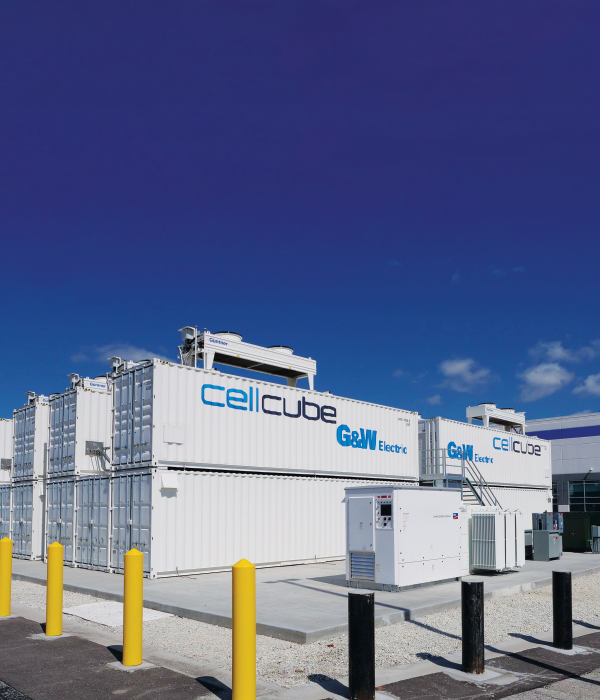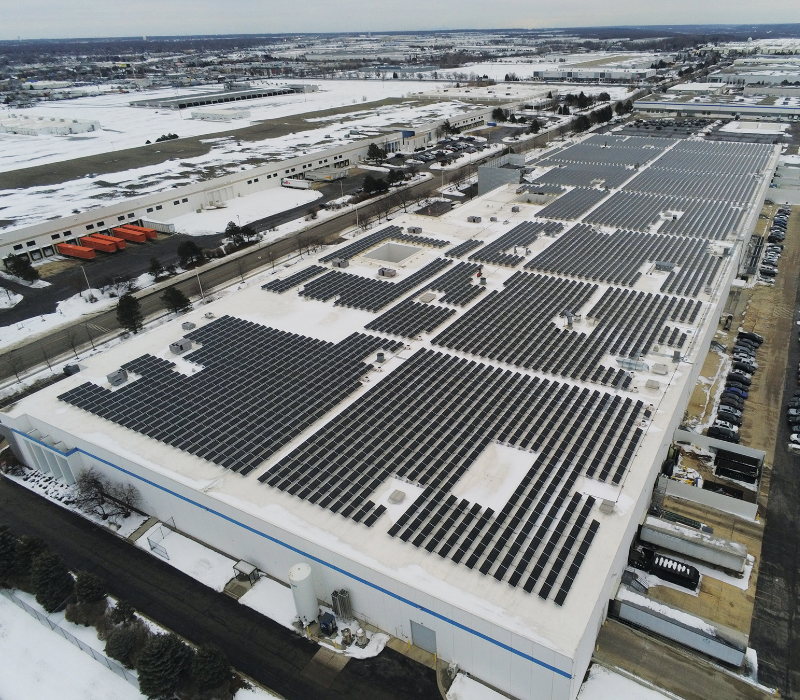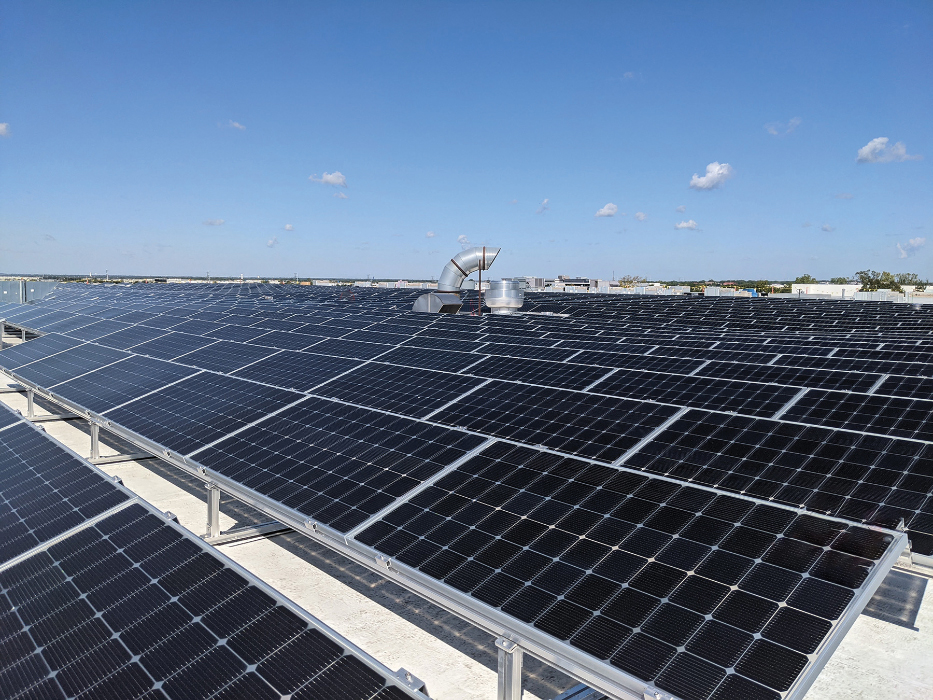For the Q2 Grid Transformation Forum, Kate Cummings, who was instrumental in implementing G&W Electric's microgrid, addresses what organizations must do if they're thinking about installing their own microgrid.
Premium power is a must-have for a growing number of organizations, and installing a microgrid can be a viable option. Even a minor outage can have a significant negative impact on a business that can lead to lost revenue, damaged product and frustrated customers. The impact becomes even more pronounced for organizations such as hospitals and military bases, that rely on always-on power for public safety or national security reasons.
In our experience, even the smallest glitch in the power system caused downtime in our molding facility, so we decided to build and install our own microgrid. This will allow us to virtually guarantee continuous, high-quality power – ensuring that business could continue as usual even when the outside grid failed. Our experience may help other organizations determine whether a microgrid might be right for them and, if so, how to go about implementation.
The decision to install a microgrid
Located in the greater Chicago area, our company produces intelligent electrical devices, including switchgear, reclosers, high-accuracy sensors and other distribution and transmission cable accessories. Our campus consists of two buildings, one of which uses highly sensitive, automated molding equipment, while the other primarily serves as an assembling facility and R&D lab. While we did have a backup generator on site, transitioning to it during a power interruption wasn’t instantaneous.
Because our molding equipment was highly intolerant to power outages that lasted more than five cycles, the lack of a way to bridge long outages represented a significant risk. Starting with the sixth cycle in an outage, for every minute of downtime, tens of thousands of dollars were lost. Maintenance teams would then have to clean the equipment out and throw away the scrapped material.
After evaluating the costs, in 2017, we decided to install a microgrid on our campus to provide premium power that would minimize – if not eliminate – the impact of occasional power outages.
The components of the microgrid
Our microgrid consists of six primary components:
- Rooftop solar array: A 2-megawatt (MW) solar farm was installed on the roof of the larger building on campus. Consisting of nearly 6,000 bi-facial photovoltaic solar panels covering more than 370,000 square feet, the solar farm is designed to generate energy from both sides of each panel by utilizing direct sunlight and reflection.
- Battery storage system: As the “heart and soul” of the microgrid, a modular Flow Battery Energy Storage System (BESS) can store power generated by the solar array and dispatch backup power in the event of an external outage. The system has four 500 kilowatt (KW) blocks, leading to a total capacity of 2 MW for four hours. If needed, it can go over capacity to 3 MW for up to two hours. It also utilizes a vanadium electrolyte solution, which is both non-degrading and fireproof.
- Flywheel: One of the most critical components of the whole system, the flywheel detects an outage in ¼ cycle and rapidly provides backup power for a short amount of time while the battery and solar farm kick in. All told, it can provide 1 MW of power for up to 68 seconds.
- Generator: A 2 MW diesel generator serves as a reliable backbone for the microgrid by providing a steady source of power for the molding facility during extended outages. The solar farm is entirely dependent upon getting enough sunlight to generate power, which is not guaranteed depending on the time of day or weather. The generator can produce dispatchable power when no other energy sources are available.
- Medium-voltage switchgear: To tie the campus together electrically, we utilized our own magnetic actuated, 15.5 kilovolt (KV) switchgear. These also provide us with greater overall control of the microgrid and allow us to continuously read data from the system.
- Pole-mounted reclosers: While technically on the utility side, we also utilized our own reclosers to improve power reliability. Within 10 seconds of losing power from the primary feeder, the reclosers automatically transfer our campus to the alternate power source.
The microgrid components combine to give us a reliable system that can provide high-quality, renewable power almost instantaneously in the event of a utility outage. And in the event of a prolonged outage or unfavorable weather conditions, we can still be confident in our ability to manufacture products thanks to the diesel generator.
A few challenges
We were through envisioning, planning and preparing for potential roadblocks. But given the scale of the project, we expected to encounter unforeseen challenges, and we did.
These challenges fell into three main categories: structural, utility-related and local government-related. And while every microgrid project is unique, any organization thinking about implementing its own microgrid should incorporate these as key considerations in the planning process.
Structural challenges
The first challenge we encountered was related to the rooftop solar array. The building selected for the solar array had recently had its roof entirely replaced, along with a weather-proofing membrane. During installation, installers had to be extremely careful not to pierce the membrane, which would have voided the warranty on the nearly new roof.
To anchor the solar panels to the roof without penetrating the membrane, we developed a specialized cinder block ballast solution to weigh the panels down. However, certain sections of the roof couldn’t handle the weight of both the panels and the ballast, so we had to avoid those areas.
The support pad for the battery proved to be a major engineering challenge as well. The batteries’ combined weight was several hundred tons, meaning that building the pad wasn’t as simple as digging a hole and pouring concrete. The pad area had to be highly engineered and specially designed to not only support the weight of the batteries but also to ensure that it wouldn’t crack as it settled over time. To accomplish this, we needed to maintain a continuous pour of concrete during construction, which also presented logistical and traffic challenges.
Utility challenges
Most of the challenges on the utility side are related to technical limitations of the current infrastructure. For example, before we could switch over to an alternate source, we needed to isolate the solar generation and battery storage to prevent problems that the utility’s feeder couldn’t handle. Although the utility does plan to upgrade the equipment in the future, programming that isolation “handshake” between the microgrid and utility did pose a technical challenge.
Establishing the interconnection agreement with the utility also took six months – a significant amount of time. This type of agreement is critical for any organization looking to construct, install and operate its own distributed energy system that’s connected to the grid. Since the agreement must be submitted, reviewed and approved before construction starts, it’s important to have all the proper documentation in place beforehand. In our case, some of the delay was due to the COVID-19 pandemic.
Our agreement allowed the utility to install a Distributed Energy Resource Management System (DERMS) so that we don’t necessarily need to isolate generation while on the alternate power source. In our case, the utility determines how much energy we can generate and manages it.
Local government challenges
We also encountered several unforeseen challenges related to the local governmental requirements. For example, the batteries in the storage system are housed in shipping containers to help protect them from the elements and extreme weather. However, shortly after construction was completed, our village informed us that local ordinances didn’t allow shipping containers to be visible from the road – even though the site was in an industrial-zoned area. As a result, we had to build an enclosure wall around the battery storage system, which was an unexpected expense.
The project also encountered a unique challenge that resulted from the campus’s location along the border between two municipalities. Although the company itself is located entirely in one town, the neighboring village has an underground well less than 400 feet from the manufacturing site. Because of this, we had to move some components of the project, as well as secure additional permits from the neighboring municipality. We also had to take steps to ensure that nothing could leak into the water supply if a disaster occurred.
Finally, we needed to make a slight change to the rooftop solar array to comply with safety codes. Initial plans called for a centralized inverter, but we decided to switch to string inverters. Centralized inverters could not incorporate a rapid shutdown device, which was a vital safety concern if firefighters or other first responders needed to access the roof in the event of an emergency.
Know before you go: Key lessons learned
While the microgrid has been a major success and an investment that has already paid for itself, there are several key lessons and takeaways that organizations should consider if they are looking into their own microgrid.
- Lesson 1 – Understand your goals: Every organization will have different reasons for implementing a microgrid. Some may do it to help meet environmental initiatives, while others might do it for financial reasons, to guarantee premium power or some combination thereof. Whatever your reason, clearly defining and understanding your unique goals will help ensure that your solution best meets your needs.
- Lesson 2 – Do your homework: Conduct any studies or surveys well ahead of time so you have time to change plans if needed. Understand any environmental regulations you may have to contend with. Learn the local laws and safety codes that you’ll need to comply with. Know the technical capabilities – and limitations – of your utility and the equipment they have. Prepare for contingencies and other extreme situations, such as what would happen if overvoltage occurred. This may require a lot of work on the front end but can save you valuable time, resources and headaches on the back end.
- Lesson 3 – Communication is key: Building and installing your own microgrid will involve numerous vendors. Coordinating and communicating with them – and ensuring they communicate with each other – is critical. Will the products and equipment arrive on time? Can equipment from different vendors “talk” to each other? We worked with vendors around the world, and while coordinating conference calls in numerous time zones was challenging, it ultimately helped ensure success.
- Lesson 4 – Be nimble: Even the most meticulous planning can’t account for every potential scenario, and unforeseen challenges will happen. When they do, agility is critical. Vendors may go out of business or stop making a crucial product. Supply chain delays may interfere with scheduling. New laws or regulations might require sudden adjustments. Unexpected costs may arise. The ability to pivot quickly and successfully can make all the difference.
- Lesson 5 – Metering considerations: One of the primary reasons for installing a microgrid is to essentially own your means of power generation. Moving from secondary to primary metering ensured that the utility didn’t own our microgrid, but required coordinating and ensuring that the right equipment and connections were in place. It also meant that we had to understand who was responsible for the various components of moving from secondary to primary metering.
An investment that paid for itself
Our main goal with this project was to minimize disruption and product loss by guaranteeing reliable, high-quality power – and the microgrid has been a resounding success. In the few months since being commissioned, the microgrid has given us uninterrupted coverage during almost a dozen instances that would have been power outages before implementation, including one that would have resulted in nearly $500,000 in lost product and material. Additionally, some days have even resulted in being able to “spin the meter back,” where the rooftop solar array has generated enough power to cover its load during the day and sell power back to the grid or charge the battery system as well.
While these takeaways should prove valuable to any organization considering a microgrid – whether that organization is a business, large hospital campus, or small municipal building – every microgrid project is unique and will present its own challenges.
For organizations thinking about implementing a microgrid, the most important thing is to make sure it fulfills their unique needs. That could be meeting clean energy goals, reducing electricity bills, and guaranteeing reliable access to power, for instance. Clearly defining those goals upfront will help ensure ultimate success.

Kate M. Cummings manages the distribution automation for switchgear at G&W Electric. She received a BSEE from the University of Illinois at Chicago and has more than 15 years of experience in the power industry at G&W Electric. Ohmite Manufacturing and Maplechase. Cummings is actively involved in several professional organizations, including IEEE, IEEE PES and NEMA. Along with being key in developing and implementing G&W Electric’s microgrid, she also helped design the Trident-SR controls that were installed at Lambeau Field in Green Bay, WI.










